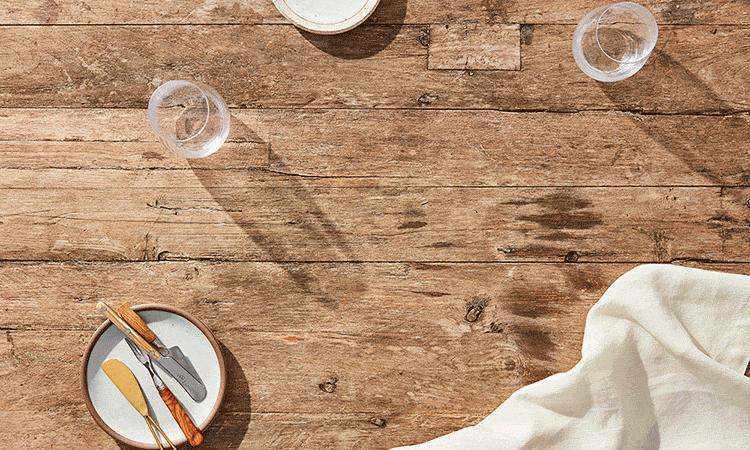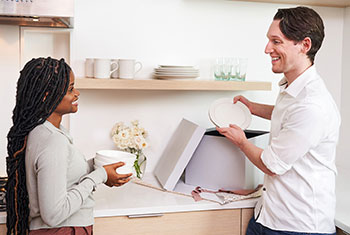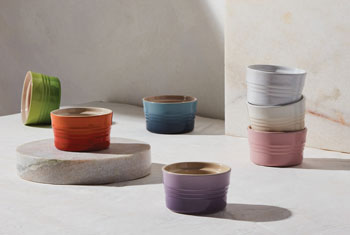Ideal for entertaining, a beautiful cheese and charcuterie board is always a crowd-pleaser. Since most (if not all) of the items are store-bought, it’s an easy way to serve an impressive spread without spending all day cooking in the kitchen. Simply lay out all the elements in an attractive pattern on a chic board, and let your guests help themselves.
And while an Instagram-worthy board might look like it takes a long time to assemble, it is actually quite easy when you have a formula to follow. From selecting the ingredients, to arranging the items on the board, and even how much food to serve, here are our step-by-step tips and techniques for how to compose a show-stopping cheese and charcuterie board.

Start with the Cheese – Choose 3
Start by placing the rounds or wedges of cheese on a Le Creuset platter to act as the focal point of the arrangement. Select a variety of cheese types, for example a hard cheese like aged Gouda, a soft cheese like Brie, and a blue or tangy cheese like Stilton or Goat. If you are serving a lot of people, add a fourth cheese that is herbaceous.
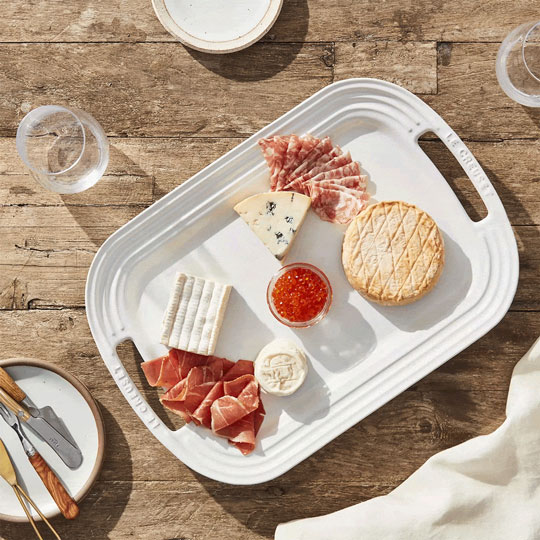
Layer in the Meats – Choose 2-3
Next arrange the meats around the cheeses, either in neat rows or small mounds. Choose a variety of textures for the meats – such as sliced salami and cured hams, spreadable things like paté or caviar, and things that can be served in pieces or chunks like hard sausages. Fold or drape sliced meats so they not only look beautiful on the board but are also easier for guests to pick up.
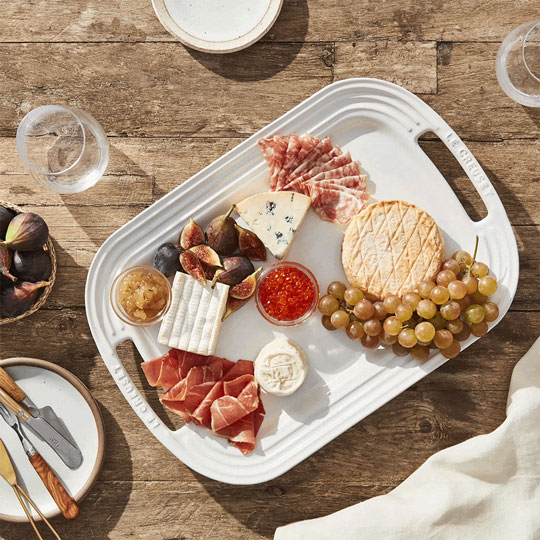
Add Some Fruit and Vegetables – Choose 2-3
Now start filling in the blank spaces on the board with fruit. Again, variety is the key here. Choose something thinly sliced like pears, melons, crudités or apples, and something in pieces like apricots, grapes and figs. You can also use a combination of fresh and dried fruit, so also think of adding dried cherries, apricots, figs and more to the board.
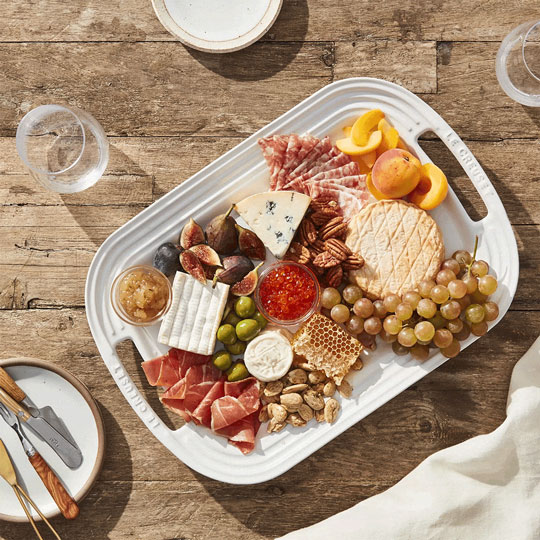
Fill-in with Nuts and Accompaniments – Choose 2-4
Fill in any remaining blank spaces on your board with nuts and other tasty accompaniments, either on the board itself or in Ramekins and Mini Cocottes. These can be anything you like that will complement the cheese and meat. Try spiced nuts, pickled vegetables, assorted olives, honey and honeycomb, jam, mustard and even tinned fish. Offer options that are both savory and sweet (about 2-3 tablespoons per person), and have a variety of textures, shapes and colours for interest. And remember that if you are serving something with a pit, don’t forget to put out a discard bowl.
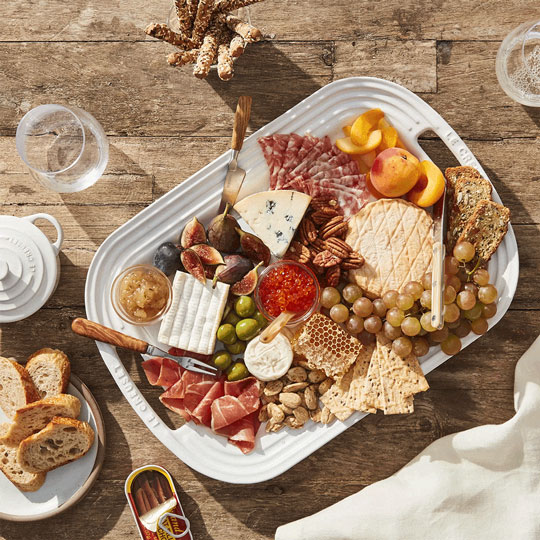
The Finishing Touches – Choose 1-2
At this point, if you still have room on the board or platter, tuck in some crackers or bread into the remaining spaces. Crusty, thinly sliced baguette is always a good option, and can provide a little more sustenance if you are not serving any other food. Or look for crackers and breadsticks that have interesting shapes and textures. If there isn’t a lot of room on the board, simply serve these items in attractive bowls and dishes to the side of the board.
Finally, tuck in some decorative herb sprigs for colour. And don’t forget to put out the appropriate cheese knives, forks, plates, and napkins for your guests. Use a separate cheese knife for each cheese and pre-cut some of the cheese so guests can just pick up a piece or know how it should be eaten or cut. Many are unsure of how to attack a cheese and charcuterie board, so give your guests as many visual cues as possible so they feel comfortable.

